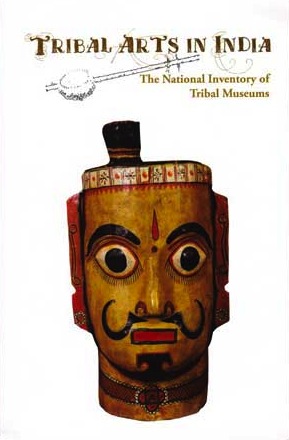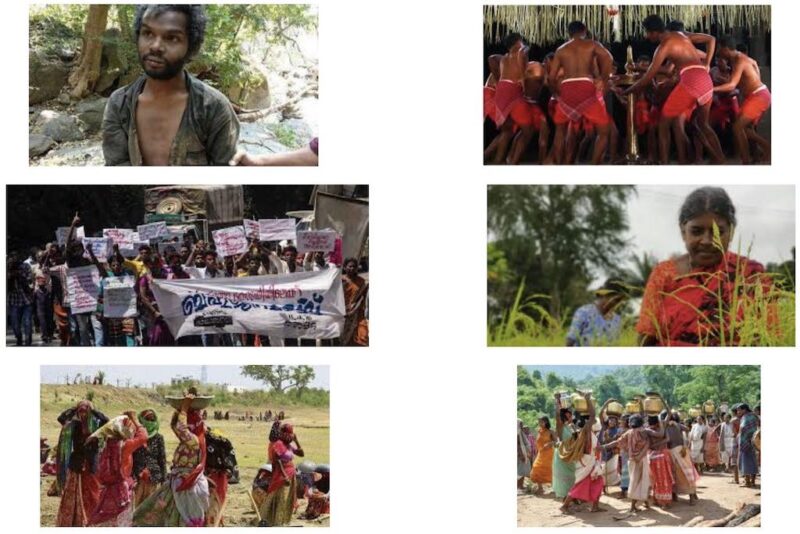Jiby Kattakayam, The Hindu, Kozhikode, December 18, 2009Unknown to many in the district and the Adivasi communities, the Ethnology Museum at the Kerala Institute for Research, Training and Development Studies of Scheduled Castes and Schedules Tribes (KIRTADS) at Chevayur is a storehouse of tribal heritage painstakingly preserved for posterity.
The exhibits at the museum convey the richness of the Adivasi culture that once was on a par with that of the rest of Kerala society. The grim question of how modernity pushed the tribal communities to the margins can distress a receptive visitor.
The museum introduces the visitor to the Adivasi hutments, kitchen implements, farming tools, hunting devices, musical instruments, Theyyam masks and so on. The differences in these among the various tribes point to a rich diversity.
The museum has three floors. Hutments and lifelike clay figures of the Cholanaicken, the Kadar and the Irula tribes occupy the ground floor. Above, the Adivasi households of Palakkad, Idukki and Wayanad come alive with an array of household utensils such as spoons, vessels and fire-making devices and bird traps. The third floor has an assortment of masks, drums, wind instruments and ornaments such as bangles and necklaces.
Some of the interesting exhibits are the Adivasi cloth (made by flattening the bark of the wild jack tree — Anjili, Artocarpus hirsutus — after keeping it immersed in water and dried); the Mottambu (arrow with a wooden tip to knock birds unconscious, instead of killing them); storing vessels (shell of pumpkin and long gourd varieties, with the edible part carved out and then dried); and non-stick pans made of bamboo.
The uniqueness of the museum is that no artefact is of antique value, each being sourced from tribal homes or made by craftsmen who continue to connect with their legacy.
S. Bindu, curator of the museum, says the displacement and impoverishment of the tribal communities have dried up the knowhow to create many such pieces.
The most-frequent visitors to the museum are researchers, students of classes 6 and 7 from city schools for whom a chapter in their textbook, Kaadinte Makkal, comes alive on seeing the exhibits, and a few Adivasis who connect with a past at this place of homage and pride.
Source: Tribal effects in a time capsule – The Hindu
Address : http://www.thehindu.com/todays-paper/tp-national/tp-kerala/tribal-effects-in-a-time-capsule/article117786.ece
Date Visited: Wed Jan 28 2015 15:57:36 GMT+0100 (CET)

Read or download titles for free (eBooks & Magazine) >>
By Pavan K. Varma
A key component in the emergence of a prosperous India is to somehow involve the influential middle class in the vital project of civic engagement. It is only such engagement that can perhaps help it transcend its obsession with short-term gain at the expense of the long-term good of the nation and its own enduring well-being. It is only such an engagement that can, hopefully, give birth to a social concern that will give primacy to the real priorities for a resurgent India. And it is only such an engagement that can give a content and direction to the new economic policies so as to harmonize the ‘globalizing’ aspirations of the few with the immediate and basic needs of the many. […]
Will the great Indian middle class be able to read the writing on the wall? If it does, there is still hope. If it does not, the India of today [i.e. first ed., 1998] will be the envy of the amoral, cynical, economically lacklustre and debilitatingly divided nation that can emerge tomorrow, the harvest of an opportunity lost, a heritage wasted.
Source: Ch. 5, “The writing on the wall’ in Varma, Pavan K., The Great Indian Middle Class (New Delhi: Penguin, 1999), pp. 213-4 | Worldcat.org >>
“Kerala tribal man lynched on suspicion of rice theft, mob click selfies: In a shocking incident in Palakkad in Kerala, a tribal youth has been allegedly beaten to death by a violent mob. […] Following the incident, Kerala Chief Minister Pinarayi Vijayan condemned the murder and said that civilised society will not tolerate such heinous acts. The police have so far detained eight and arrested two persons in connection with the incident. “
Source: “Kerala tribal man lynched on suspicion of rice theft, mob click selfies”, India Today, 23 February 2018
URL: https://www.indiatoday.in/india/story/kerala-locals-beat-tribal-man-to-death-clicked-selfies-with-him-1175887-2018-02-23
Date Visited: 24 May 2024
[Bold typeface added above for emphasis]
See also
Biodiversity and development – Kerala
Childhood – Kerala | Childrens rights: UNICEF India | Safe search
Childrens rights: English or Malayalam (UNICEF India)
eBook | Background guide for education
Education and literacy | Right to education
Kerala | State wise ST list (Scheduled Tribes)
Recommendations by the Expert Committee on Tribal Health
Tribal schools and educational projects – Kerala
Video | M.S. Swaminathan on Biodiversity and the sharing of resources
Video | Trailer to “Have you seen the arana?” – Kerala
Vulnerable tribal groups – Kerala
Women | Safe search | President Droupadi Murmu on women’s empowerment
